A few weeks ago, I wrote about the Promenade Planteé in Paris. Today, I’d like to compare it with New York’s High Line. Both are public parks that employ the structure of abandoned railways but the evidence of a former existence is much stronger on the High Line.
At the beginning of August, I was in New York to see a special art exhibit and to visit the the High Line’s newest section that actually opened last fall. The new section extends west from 10th Avenue at 30th Street to 12th Avenue and then bends north to 34th Street. Deemed the Interim Walkway, the walkway and fences are finished but most of the plantings have been designed by Mother Nature.
I love the physical evidence of the walkway’s former life. Many of the fencing sections and some of the benches are composed of recycled rail trestles while a few of the walkway sections look like tracks (footing is a bit tricky). Recycling materials that were used in its original incarnation gives the High Line a sense of place. This principle of landscape design is often overlooked or forgotten but, at the High Line, it is a linchpin of the overall design.
It is fascinating to see what Mother Nature has planted on the Interim Walkway. As the new section nears the nexus to the existing sections, there are a few person designed beds such as one with a neglected ornamental grass, Spodiopogon sibericus, and two types of asters, Eurybia macrophylla ‘Twilight’and Eurybia spectabilis.
You can see how different the styles of these two parks are. The one in Paris is mostly formal while the one in New York is very informal. The plantings on the Interim Walkway will probably change as money is raised to have them designed but I hope that a few beds will be left wild to demonstrate that plants are tenacious and that there are always some that can survive under any circumstances.



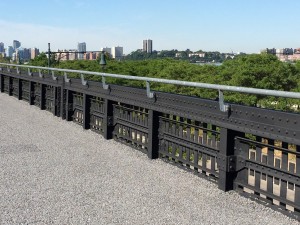

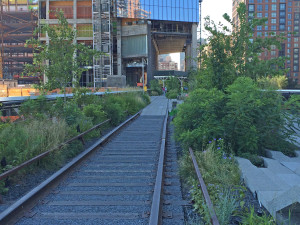

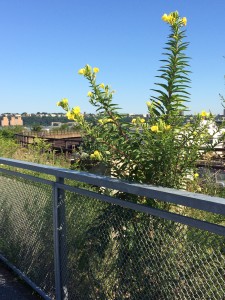
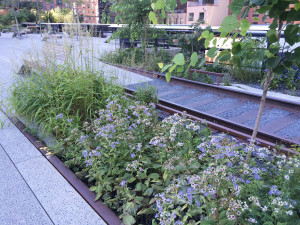
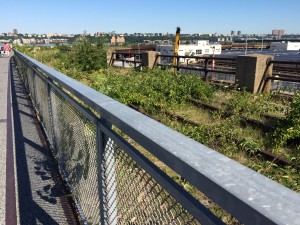
1 Comment